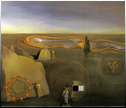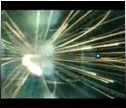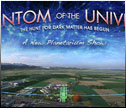Displaying the experimental apparatus
To explore particle collisions at extraordinarily high energies, ATLAS needs a device to detect particles, measure their properties, learn their identity, and track their paths. This device, the ATLAS detector, searches for new phenomena that tell us about the nature of energy, mass, space and time. The gigantic eight-story ATLAS experiment is composed of different layers of detector elements wrapped around the collision point. Each layer has its own function to determine the energy and identity of the particles produced in the proton-proton collision. The detector is composed of close to 90 million small elements whose signals are read out for each recorded particle collision.
To understand its operation, one needs to visualize this massive device in innovative ways. It was constructed in a giant cavern 100 meters underground (where the Large Hadron Collider was built). Since ATLAS fills the cavern, there is no one photo possible, although some now-iconic images were taken during construction. Animations are amongst the best means to "see" the detector.


























